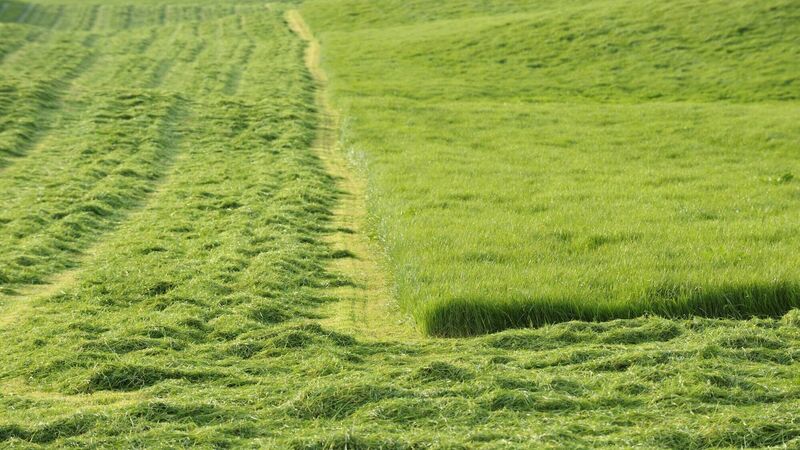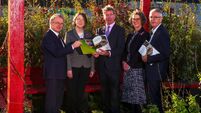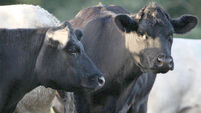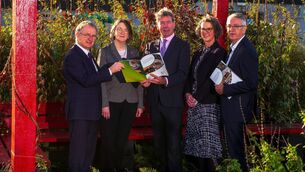How much is an acre of standing crop silage worth this summer?

Fresh cut grass ready to be used to make silage on a dairy farm in south west Scotland. The photograph was taken as the sun was setting.
A standing crop of silage is worth about €340 per acre, according to a Teagasc evaluation.
But if it costs €150 per acre to make silage of it, the value of the standing crop is reduced to about €190.
With silage and fodder reserves exhausted after prolonged winter housing, and poor grass growth this year, the silage evaluation by Martina Harrington, manager of the Teagasc Future Beef Programme, offers useful guidance to those seeking extra winter feed.
She valued the silage by comparing it to the purchased (at €320/t) concentrate feed it may replace. Also assumed is a yield per acre of seven bales of 68% digestibility silage, each 220kg in dry matter terms. Also built into the calculations is a 15% loss of feed value during silage making.
The next step in estimating the value of a standing crop is to subtract the costs of silage making, such as mowing, baling, wrapping and stacking. These costs may vary from farm to farm, but example costs of €25 per bale and €150 per acre of pit silage are used in the calculations.
The balance is what you can afford to pay for a standing crop. The price will have to compensate the grower for slurry, fertiliser, lime, and other land costs.
Each farmer thinking of buying a standing crop should estimate the cost of concentrate feeds compared to silage, and the quantity of bales and quality of the silage.
A silage contractor could be asked how much it costs to make the silage and to get it home to the farmyard.
According to Martina Harrington's calculations, differing silage yields and digestibilities affect the financial outcome. Compared to concentrate priced at €320, the acre of silage (excluding ensiling cost) could range in value from €224 for five bales of 64% digestibility silage to €615 for 12 bales of 72% digestibility silage.
If you compare silage to a concentrate priced at €340, the value per acre range is from €238 to €653. Compared to a €360 concentrate, the value per acre range is from €253 to €692.
Teagasc advises farmers to complete a fodder budget, with a 20-25% buffer to take into account the possibility of a prolonged winter feeding period again this year.
Every opportunity to harvest silage should be taken, including a third cut on some fields in September and any surplus grass on grazing ground.
Finishing some stock off grass could reduce autumn grazing demands and the winter fodder requirement.
Buying silage bales locally could be of great benefit if you have knowledge of the farm that the bales came from.
Renting ground near your home farm for six to eight weeks and fertilising it for silage may be a good option.
If silage is going to be tight next winter, forage crops like rape may be an option, perhaps in fields planned for reseeding next year.
If linking up with a tillage farmer to purchase whole crop silage, maize silage, grass silage, beet, or other crops, it would be important to complete a contract cropping agreement so that each side knows their obligations.










